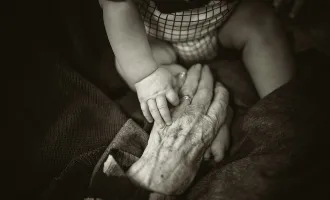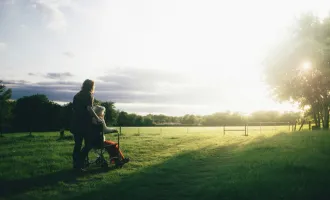
This Date In UCSF History: Health care Sandinista-style
Originally published on Oct. 18, 1982 in Synapse – UCSF Student Voices.
On Oct. 1 to 5, 200 North American health workers, armed with medical supplies, books, lecture outlines and clinical experience, travelled to Nicaragua to participate in the second U.S.-Nicaragua Colloquium on Health.
We went to provide updated medical information on a broad range of topics and to observe first hand the health conditions in the country.
We formally presented papers and ran workshops and attended those given by our Nicaraguan colleagues.
We visited hospitals and clinics, rehabilitation centers and psychiatric day hospitals, urban neighborhoods and farm communities, prisons and churches.
We met with health workers and patients, guards and prisoners, government workers and opposition leaders.
For many of us the most important aspect of our experience was the realization that Nicaragua is at war. It seemed clear that this is not a civil war, but a war of aggression, sustained by our own government.
Since 1981, over 9,000 Nicaraguans have been killed, which in this small country, is more than twice the percentage of North Americans who died during the entire Vietnam War.
Working closely with the Ministry of Health, the Health Workers Union and many individual health providers, we carefully tried to document the health effects of the war.
Since 1981, 22 health workers have been killed while on duty and 23 others kidnapped, often suffering rape or torture. But the war's impact, we discovered, goes far beyond mere body counts of dead and wounded.
Since 1981, 38 health facilities have been destroyed and 12 others abandoned due to ongoing aggression. Such conditions, especially in a poor nation, make construction of new health centers and sanitation facilities difficult.
One hospital we visited near the Honduran border had no running water. In war zones, popular health campaigns have been seriously set back. Programs for insect control, water purification and oral rehydration treatment (to replace liquid in victims of gastrointestinal disease) have suffered.
As a result, the incidence for many infectious diseases has stopped decreasing and in some areas is increasing. In Managua and other non-combat zones, the war is felt in different ways.
Non-urgent civilian health care is often deferred for up to six months. Medicines and surgical supplies are often unavailable. Mental health workers have observed a marked increase in depression from war-related losses of family members.
The dean of the medical school said program development has slowed due to mobilization of personnel to the fronts and a lack of teaching resources.
For the UCSF contingent a particularly important visit was to the teaching hospital, Dr. Oscar Panilo Rosales Arguello, in Leon.
Two months earlier a UCSF delegation visited the hospital. It included Ellen Schaffer and Joe Brenner from the American Federation of State, County and Municipal employees (AFSCME) locals 3215 and 3218, which represent UCSF patient care technical and clerical employees, and myself.
We established a “sister hospital” relationship with the UCSF hospitals, which included a formal letter of support from AFSCME and a pledge to send material and technical aid.
The teaching hospital is the oldest in Nicaragua and has 322 beds. Much like UCSF, it delivers a wide range of services from walk-in primary care to tertiary care in 22 specialties.
As a major training center, it offers training programs for nurses, medical technicians, medical students, house staff and subspecialty fellows.
We were all particularly struck by the important role health workers played in both day-to-day and long-term administration of the hospital. At every administrative level committees of health workers shared responsibility with the hospital administration.
But the effects of the war were visible here too. Surgical gloves had to be re-sterilized. Suture material was in short supply, while incubators, ICU monitors and flouroscopy machines stood idle for lack of spare parts.
Our visit coincided with the peak of the Nicaraguan election campaign. On November 4, the Nicaraguan people will elect a president, vice president and member assembly.
We met with candidates from three of the seven participating political parties and the chairman of the Supreme Election Council, the government body which administers the elections.
As the U.S. press so carefully reports, our government feels the election is undemocratic since the opposition is not participating, and the Sandinistas are sure to win.
Actually seven parties are participating including three “right of center” opposition parties and three parties “left” of the Sandinistas.
Each party is granted free weekly television time and governmental funds to finance the campaign.
Private fundraising, both inside and outside the country, is also permitted. Three parties have chosen not to participate despite extensions granted to them for additional time to prepare. Ideas vary as to why they abstain.
Most Nicaraguans we spoke with feel that since they have little support in the country for their positions, these parties will do best by discrediting the elections and seeking international support, especially from the United States.
Meanwhile, 94 percent of eligible voters have voluntarily registered to vote, suggesting widespread support for the elections. For many Nicaraguans, this will be their first vote.
Election outcomes during the Somoza regimes were predetermined, so most people chose not to vote. Yom Kippur in Nicaragua Early in our planning for the colloquium we realized that the final evening of the conference coincided with Yom Kippur, the holiest day of the Jewish year.
The Nicaraguans suggested that we end the conference early and observe the holiday together. As Jews and non-Jews alike, we were particularly moved by this, having witnessed the Reagan administration’s accusations of anti-Semitism against the Nicaraguans.
A traditional Jewish service led by a North American Jew from our group was held in Managua's outdoor ecumenical center. Following the service, a local music group played from the new “compasino mass,” liberation theology's interpretation of the Catholic service.
As individual participants, each of us left with our own impressions, memories, and new relationships.
But as a group, we formed a common perspective: Nicaragua's major health care problem is U.S. aggression. As health care workers our task is to share our experiences with our colleagues, family, and friends and work together to stop the undeclared war.
Nicaragua wants peace. Everywhere we visited we were told, “We are such a small, poor country. Why won't they leave us alone? Please tell the American people, ‘all we want is peace.’”
Robert Baron is an assistant clinical professor of medicine and director of the screening and acute care clinic at UCSF.


